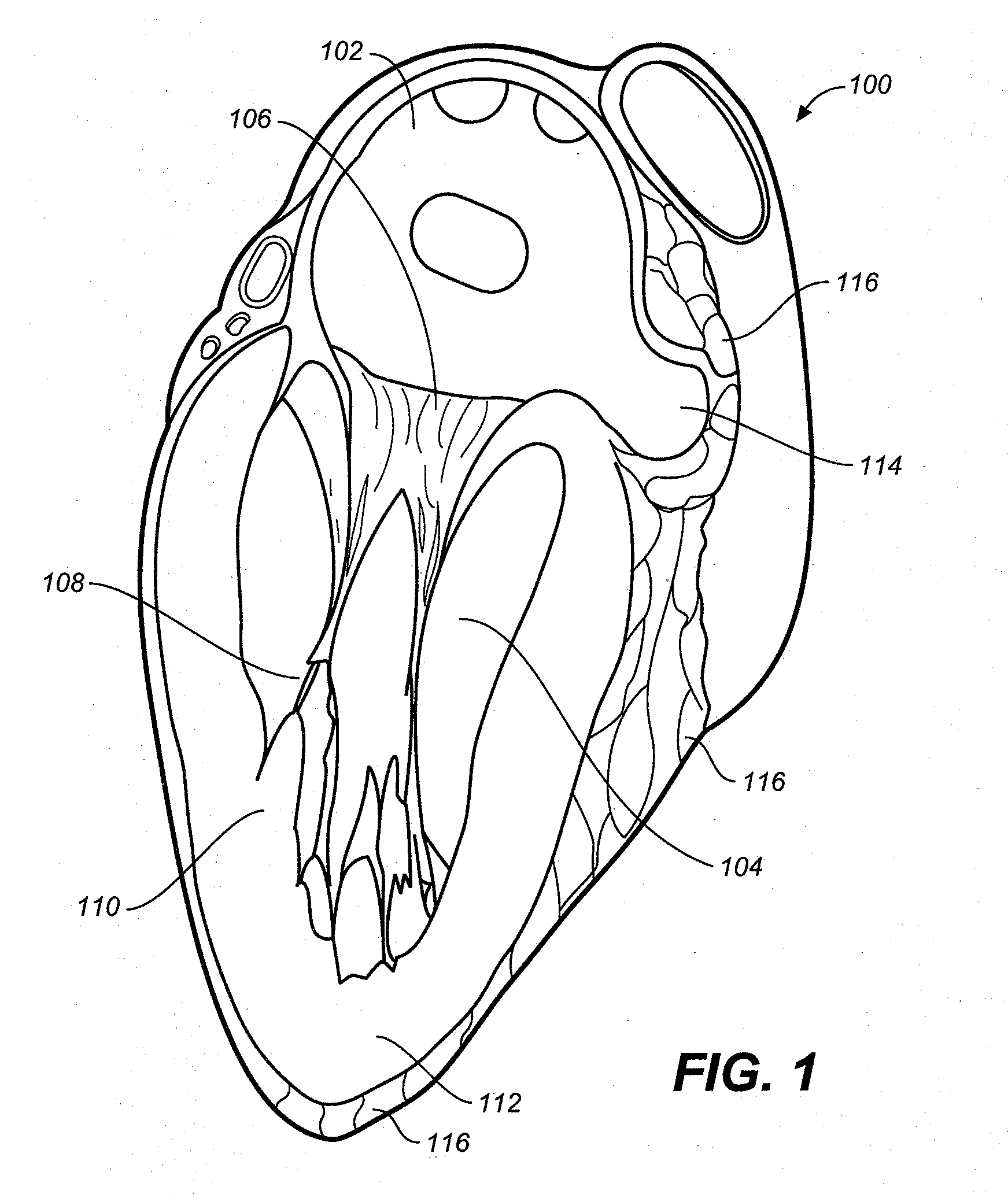Devices, systems, and methods for closing the left atrial appendage
a technology of left atrial appendage and device, applied in the field of devices, systems and methods for closing can solve the problems of atrial fibrillation, thrombosis, or clot formation in the appendage of the left atrium, and achieve the effect of facilitating optimal closure of the left atrial appendag
- Summary
- Abstract
- Description
- Claims
- Application Information
AI Technical Summary
Benefits of technology
Problems solved by technology
Method used
Image
Examples
Embodiment Construction
[0043]Described here are devices, systems, and methods for closing the left atrial appendage. In this regard, it may be helpful to start by briefly identifying and describing the relevant heart anatomy. Shown in FIG. 1 is a cross-sectional view of the heart (100). Shown there is left atrium (102) and left ventricle (104). In between the left atrium (102) and the left ventricle (104) is the mitral valve (also known as the bicuspid valve), which is defined by a pair of mitral valve leaflets (106). The leaflets are connected to chordae tendinae (108) that are in turn, connected to papillary muscles (110). The papillary muscles join ventricular wall (112). The left atrial appendage (114) is shown adjacent to, and is formed from, the wall of the left atrium (102).
[0044]As can be seen, the left atrial appendage (114) lies within the boundaries of the pericardium (116), and is in close proximity to the ventricular wall (112). The left atrial appendage typically has a tubular shape that app...
PUM
 Login to View More
Login to View More Abstract
Description
Claims
Application Information
 Login to View More
Login to View More - R&D
- Intellectual Property
- Life Sciences
- Materials
- Tech Scout
- Unparalleled Data Quality
- Higher Quality Content
- 60% Fewer Hallucinations
Browse by: Latest US Patents, China's latest patents, Technical Efficacy Thesaurus, Application Domain, Technology Topic, Popular Technical Reports.
© 2025 PatSnap. All rights reserved.Legal|Privacy policy|Modern Slavery Act Transparency Statement|Sitemap|About US| Contact US: help@patsnap.com



